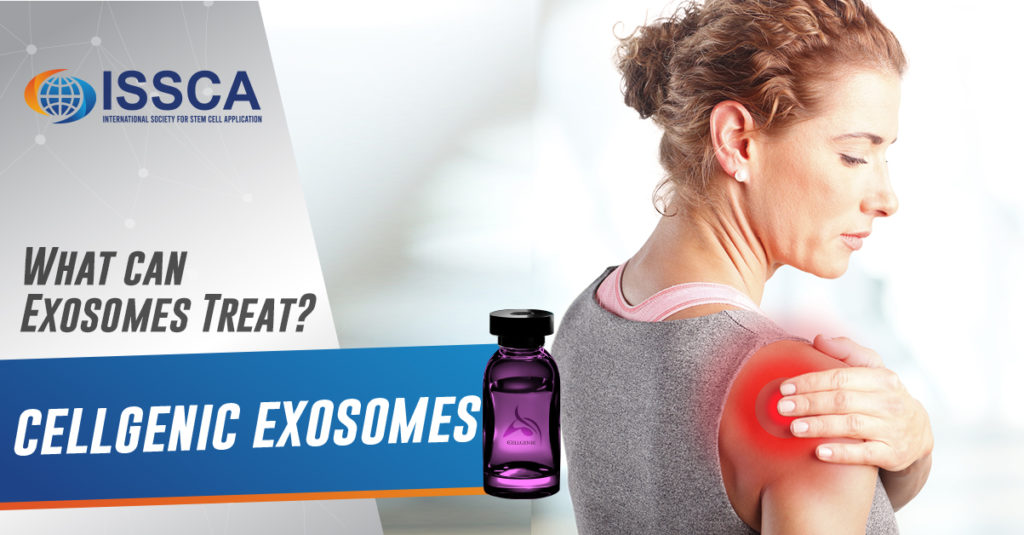As the newest field to regenerative medicine, it’s often exosomes therapy the least understood by those doctors newer to the field. While still not in use by many doctors, this is simply because it is new to the field. This is because many scientists are practically rabid to harnessthe benefits of this new treatment and apply them to target many of the conditions that modern medicine has allowed to slip through the cracks.
Extracellular Vesicles and Exosomes
The discovery of extracellular vesicles (EV), small bubbles composed of protein freely among cells, has been considered one of the greatest advancements in the field of medicine. They are broadly defined as something that exists outside of the cells of the human body, and they can be quite unique. Among these are exosomes, which has shown almost miraculous promise in treating inflammation, immunomodulation, cell-cell communication, and much more. Although it is certainly not a cure-all, it has been found to be good at what it does, which is almost a little bit of everything.This includes the communication and rejuvenation of all cells in the body, despite not actually being one itself.
Exosomes are created by growing a healthy stem cell culture and disposing of the cells themselves– this leaves behind the exosomes, millions of them, that were created in the process. Due to their microscopic size, what is left behind must be ultra-centrifuged, as it is the only way to concentrate them enough to use them on a patient. Despite all of their abilities, the makeup of exosomes is really quite simple, amino acids and RNA– this means that, aside from bearing immunomodulatory properties, it can also be applied to a patient without causing an immune system reaction. This is a worry that modern physicians must constantly think about when implanting foreign objects into patients, that is one of the great benefits of the use of exosome therapy.
An Overview on Exosome Therapy
Generally defined, exosome therapy is the use of exosomes in a clinical setting, a new step forward that is being happily taken by physicians worldwide. Exosome Therapy has very rapidly become one of the most popular fields of regenerative medicine treatment around the world. Painstaking research has managed to highlight the practical uses of exosomes, and how they can be used to treat conditions including lyme disease, hair loss, and arthritis. This is because, while stem cells are largely responsible for the rejuvenation of older cells, they might not be able to supply the information required for healing to take place– and this is where exosomes come in.
Consider exosomes the traffic conductors of regenerative medicine. They stimulate attention to damaged areas and work to control inflammation. In fact, many talented researchers believe that, by supporting the function of exosomes in the body, a better outcome could be obtained in patients. These scientific breakthroughs have fundamentally changed the healing process as we know it.
Exosome therapy is minimally invasive, and most commonly used in patients that present with orthopedic injuries, but this is not it’s only use. It shows great applications for anti-aging medicine, and the treatment of inflammatory and degenerative diseases. Exosome treatments generally contain a combination of growth factors, messenger RNA, micro RNA, and cytokines. The resulting exosome treatment is used in conjunction with stem cell therapies to boost the healing process in patients. These exosome therapies can be administered directly into the affected area, but they can also be administered through IV drip for those that are looking to make use of the anti-aging properties of exosomes.
Exosome injections are administered like other cellular therapies– administered directly into the part of the body affected by disease. In each case, patient dosing varies on condition and treatment plan, which means that there is no exact treatment protocol for exosome therapy. However, this allows physicians to fully customize them to a patient’s needs.

What can Exosomes Treat?
As the field of regenerative medicine constantly grows, more and more treatments are discovered every month! However, researchers have been able to offer exosomes as an exciting alternative for a wide variety of illnesses, including in arthritis therapy– it is believed to play a large role in bone and cartilage remodeling.Exosome therapy currently shows promise in treating the following conditions:
Hair Loss: Exosomes can be used to regrow hair due to their growth factor content. When injected exosomes trigger healing and the natural regeneration of hair follicles.
Lyme Disease: Exosomes may be beneficial to patients who suffer from Lyme disease, which is a very complex disease that compromises the immune system. Because it results in an increase in inflammatory responses, incorporating exosomes into one’s treatment plan could help break the cycle of inflammatory response.
Arthritis: Arthritis is known by many as the inflammation of the joints as a result of an autoimmune deficiency. Although various types of treatment are available to alleviate symptoms, nothing has been confirmed to reverse the disease’s progression.
Anti-Aging: Generally, aging can be thought of as a slow, steady inflammation of the body. Researchers have found a direct correlation between the number and types of exosomes within the body and the effects of aging, which means that exosome therapy could be used to reduce swelling in patients, and can be used to treat conditions such as crow’s feet, puffy eyes, and other markers of aging.
Pain Management: On a similar vein, many pain symptoms are also the result of inflammation– this is why certain over-the-counter medications allow for the treating of light pain. But for severe, chronic conditions that cannot be treated with over the counter options, exosome therapy could be the key to increasing their quality of life. By targeting the pained area at the source of inflammation, exosome therapy can increase quality of movement and reduce pain in certain orthopedic conditions including stress injuries.
As physicians around the world continue to study and apply exosomes, Global Stem Cells Group recognizes the fervent need to get these products into doctor’s hands. Our Cellgenic line has been in operation for years, helping physicians treat these conditions and more with exosome therapy.







